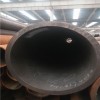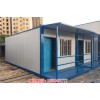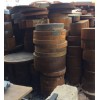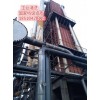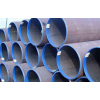mso-hansi-font-family:"Times New Roman"">一、砌体原位压力机概述:
SL-80T数显砌体原位压力机(砌体原位轴压仪)是根据建设部于2000 mso-hansi-font-family:"Times New Roman"">年7 "Times New Roman"">月6号颁布的国家标准GB/T50315-20砖砌体的抗压强度, mso-hansi-font-family:"Times New Roman"">是现场检测砖砌体抗压强度综合评定的首选设备。特点:吨位大、行程高、不漏油、使用方便并有数字显示表、示值精确、保留峰值。
mso-hansi-font-family:"Times New Roman"">二、砌体原位压力机主要用途:
mso-hansi-font-family:"Times New Roman"">本设备适用于推定240mm "Times New Roman"">厚普通砖砌体的抗压强度,是现场检测砖砌体抗压强度综合评定的首选设备。《砌体工程现场检测技术标准》制作而成的一种新式砂浆原位现场检测仪器,它具有精度高、误差小、测量准确等特点,是目前较为常用的一种砂浆检测仪器。适用于推定240mm mso-hansi-font-family:"Times New Roman"">厚普通
mso-hansi-font-family:"Times New Roman"">三、砌体原位压力机主要结构组成:
mso-hansi-font-family:"Times New Roman"">由扁式千斤顶、四根强力拉杆、上压板、下压板、球头垫、手泵压力杆、数显表或防震压力表、回位压兰等部件。
mso-hansi-font-family:"Times New Roman"">四、砌体原位压力机主要特点:
mso-hansi-font-family:"Times New Roman"">吨位大、行程高、不漏油、使用方便并配有油压防震显示表、示值精确。
mso-hansi-font-family:"Times New Roman"">五、砌体原位压力机主要技术指标:
mso-hansi-font-family:"Times New Roman"">额定压力:800KN "Times New Roman"">; 极限压力:1000KN
mso-hansi-font-family:"Times New Roman"">最大行程:20mm "Times New Roman"">; 极限行程:25mm
mso-hansi-font-family:"Times New Roman"">示值相对误差:3% "Times New Roman"">; 上压板平面尺寸:370mmX240mm
mso-hansi-font-family:"Times New Roman"">设备总重量:104kg "Times New Roman"">、其中扁式千斤顶57kg
mso-hansi-font-family:"Times New Roman"">下压板尺寸:240×240mm
mso-hansi-font-family:"Times New Roman"">贮油量:1.5 "Times New Roman"">升
mso-hansi-font-family:"Times New Roman"">扁式千斤顶主缸直径:168mm
mso-hansi-font-family:"Times New Roman"">六、砌体原位压力机测定方法:
1、先在墙体上开凿两条水平槽孔
①上水平槽尺寸应为 240mm×250mm×70mm(深× mso-hansi-font-family:"Times New Roman"">宽× "Times New Roman"">高)
②下水平槽尺寸为 240mm×250mm×140m(深× mso-hansi-font-family:"Times New Roman"">宽× "Times New Roman"">高),( mso-hansi-font-family:"Times New Roman"">下槽的高度视压力机型号不同而调整)
③上下水平槽孔对齐,两槽间相隔 7 mso-hansi-font-family:"Times New Roman"">皮砖,净距约 430mm
④槽间砌体的承压面修平整。
2、安放原位压力机
①在上槽下表面和扁式千斤顶的顶面,均匀铺设厚10mm mso-hansi-font-family:"Times New Roman"">湿细砂垫层或石膏等其他材料,便于均匀受力。
②将反力板置于上槽孔及扁式千斤顶置于下槽孔,并使两个承压板上下对齐后,拧紧螺母并调整其平行度。
3、试加荷载检查测试系统是否灵敏以及上下压板和砌体受压面接触是否均匀密实,待正常后卸荷即开始测试。
4、正式测试分级加荷,每级荷载约为预估破坏荷载的10% mso-hansi-font-family:"Times New Roman"">,加至预估破坏荷载的80% "Times New Roman"">,连续加荷直至槽间砌体破坏( "Times New Roman"">当槽间砌体裂缝急剧扩展而压力表指针明显回退时,即为槽间砌体的破坏荷载) "Times New Roman"">。
5、将破坏荷载换算成槽间砌体的抗压强度和标准砌体抗压强度,再与设计值对比,从而判明现有砌 "Times New Roman"">体的真实强度。
6、数据分析。













